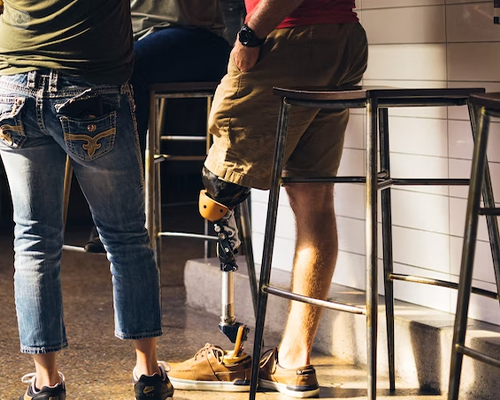Targeted muscle reinnervation: what is it, and what's it used to treat?
Escrito por:Top Doctors had the pleasure recently to chat to highly distinguished consultant plastic surgeon, Miss Tania Cubison, to find out what exactly targeted muscle reinnervation is, who the ideal candidate for the surgical procedure is, as well as the main risks associated.

What exactly is targeted muscle reinnervation, and what is it used to treat?
Targeted muscle reinnervation (TMR) is a new technique for amputees where sensation nerves, which have been giving a problem in the form of pain, can be divided and connected to a muscle nerve which then gives that nerve somewhere to go and something to do.
This technique can improve most patients’ experience, and their pain, which was once severe, decreases and becomes more manageable.
Who is the ideal candidate for targeted muscle reinnervation?
TMR is indicated for a patient who has very bad symptoms, particularly phantom pain maybe a number of years after they have had an amputation. It is also sometimes indicated for non-amputees who experience really bad pain in a particular area of the body.
Patients who experience very nasty sensations, particularly in the lower limb area of the body, can also benefit from TMR.
What are the main potential risks?
The main risk of TMR is that you are taking away the sensation component, so the part of the body treated by TMR will become numb. Extra care is needed as a result, as, because patients may not be as aware of rubbing, ulcers can occur.
There is also the risk of scarring, bleeding, and infection. One thing to bear in mind is that it takes quite a while to fully work for patients, and it is not guaranteed to work for everybody.
How successful is it?
In most patients, we see at least a 50 per cent improvement in their pain levels. It is unusual to get a total resolution of pain. There are a very small number of patients for whom their pain is actually worsened following this surgery, but most people get a definite benefit.
How long is the procedure, and is recovery time necessary?
It depends what area of the body is involved. The most common reason for doing TMR is for someone who has an amputation below the knee, in which case, the operation would last around two hours. It tends to be performed under general anaesthetic.
Generally speaking, the operation can last anywhere from one hour to four hours. Post-operatively, you would need to be in hospital for a few days in order to manage your pain. Some patients require nerve blocks to manage their pain. After a few days, most patients would go home, with the wounds healing after a couple of weeks.
The average amputee would be able to get back into their amputation socket around three weeks after their operation. There is then a period where the nerves regrow. The speed of your nerve regrowth depends on your age and other medical problems. The time it takes for the nerve to fully regrow can take more than six months and some have had benefit even up to 2 years after surgery.
Miss Tania Cubison is a highly accomplished consultant plastic surgeon who specialises in targeted muscle reinnervation. Consult with her today via her Top Doctors profile.


